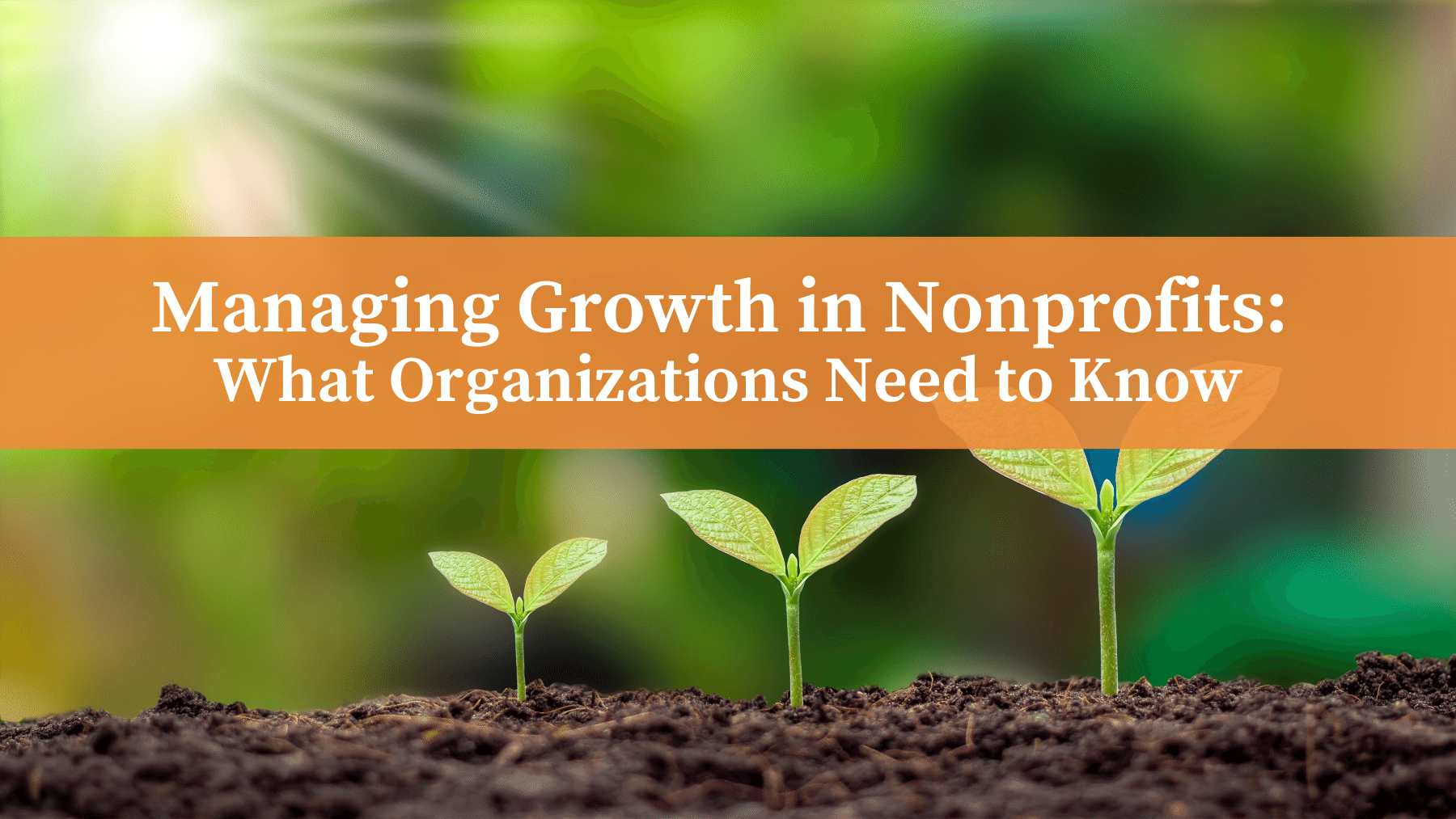
Why do some nonprofits continue to grow, while others stagnate, or even contract? In many cases, the reasons that drive nonprofit growth trends involve fundamental strategies that span departments, programs, and functions. In this post, we’ll discuss three of the most common reasons for stagnant growth.

Reason # 1: Not keeping up with changing member needs.
From our experience, the most common obstacle to a nonprofit association’s growth is the failure to monitor and adapt to changing member needs. Many nonprofits have years, or even decades, of experience meeting member needs, and have developed a variety of programming, services, and products to meet them. That track record can also be a double-edged sword: inertia can cause an organization to continue offering programs and services even as they become less and less relevant to members.
This is why the most successful organizations monitor member needs and preferences on an ongoing basis. These insights allow them to adjust current programs, discontinue ones that no longer meet member needs, and develop new offerings in response to emerging opportunities. There are various effective methods of tracking changing member needs, including analysis of historical data, focus groups, member surveys and polls, specialized task forces and more.
To translate data on member needs into actionable insights, one commonly-used approach is to create member personas. These are a shorthand way of characterizing the behaviors and attitudes shared by major categories of individuals within your membership. A typical persona includes some demographic information (such as job title, typical years in the industry, etc.) and some psychographics (attitudes about your organization or other key topics, price sensitivity, career aspirations, etc.). The value of these personas is that you can use them to effectively target and market to different segments of your membership, and develop tools and resources relevant to particular segments.
Reason # 2: Out-of-date or ineffective technology.
Another major factor driving nonprofit growth trends is when an organization falls behind in using technology to serve its members. This can result in slower and less efficient business processes that can ultimately lead to poorer member satisfaction. It can also have a negative effect on the overall brand of the organization, making it seem stodgy or behind the times, and thus harming its appeal to the younger individuals it needs to bring in as new members.
To cite one powerful example, the social media landscape continues to evolve rapidly, with platforms gaining and losing ground in their popularity, often according to the user’s age. Currently, LinkedIn continues to dominate the field in terms of more senior professionals in most industries. Still, it remains to be seen how the social media preferences of the younger segments of the workforce will continue to evolve. For now, the safest bet is to assume that you’ll need a continued presence on LinkedIn and Facebook — but keep your eyes open for emerging trends, especially among your younger members.
Reason # 3: Outdated membership structure.
In many industries, nonprofit associations occasionally need to revisit their membership structure. Drivers for this strategy can range from economic downturns (whether broad or more industry- or region-specific), consolidation in the industry, new competing organizations or platforms that are siphoning off members, or other factors. Each association faces its own combination of factors, and no single solution is appropriate in all cases.
To cite a well-known example, several years ago, the American Society of Association Executives (ASAE) initiated a major change to its membership structure, introducing a hybrid model for associations and Association Management Companies (AMCs). Under its new model, associations, and AMCs could pay a single flat annual fee determined by staff size, and individual employees could choose to opt-in to join ASAE. The change was carefully considered, planned, and implemented, and today the new structure has become the new normal for the organization.
Of course, such a change is a complex, high-stakes decision and can’t be taken lightly or achieved quickly. But if your membership numbers have been experiencing problems for some time — for example, even before the pandemic and its devastating effect on meetings and conferences — it may be worth reevaluating your membership structure.
Keep your eyes on the prize
Nonprofit growth trends have faced unprecedented challenges and pressures. Likely, your association’s board is already reviewing revenue and membership numbers and exploring options. But if not, it may be worth doing some initial exploration of various responses — including changes to your membership structure, as noted above, or strategic alliances with other organizations.
Sustained growth has never been easy, but the current environment makes it a greater challenge than ever. Fortunately, by keeping an up-to-date understanding of member needs and preferences, maintaining an effective technology profile, and periodically reviewing your membership structure, you can help your organization make it through the tough times and strengthen on the other side.





